Nov
24
2009
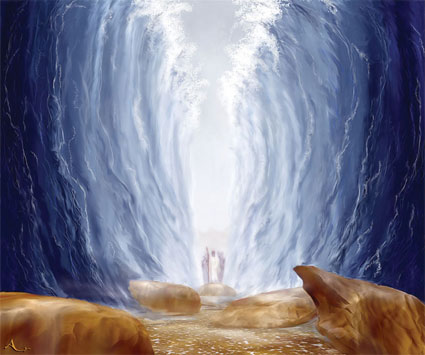
There was a discussion of purgatory on the BH list. Someone summarised it as follows: [1]
“Or, perhaps, with Peter Kreeft, one might interpret purgatorial cleansing as a form of heightened and perfected awareness, effected by the light of God’s presence as an illuminating and purifying fire. Thus, in death, in coming face-to-face with God, we finally see ourselves as we truly are, the depths of our own sin and brokenness, and all the consequences and ruin wrought by our own sin and unfaithfulness in our own lives, the lives of others, and the ongoing life of our family, church, and world.
Continue reading
Comments Off | tags: Atonement, Azal, Baptism, Communion, Crystal Sea, Laver, Purgatory, Roman Catholicism | posted in Biblical Theology, Quotes
Nov
4
2009
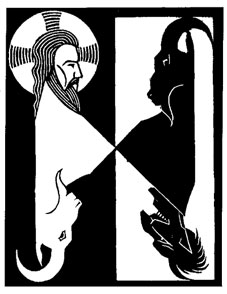 .
.
Sabbath – Jesus defiantly heals a man on the Sabbath under the accusing eyes of the Pharisees. It is a conflict between the brittle light of the law and the perfect light of lawful love.
Passover – The Pharisees “go out” and plot with the Herodians to destroy Him. But Jesus withdraws with His disciples to the sea.
Firstfruits – Jesus ascends a mountain and calls those He wants. He appoints the twelve to preach.
Pentecost – (Wilderness/Rulers) Jesus is accused of being the “Lord of the Flies.”
Trumpets – He calls them to Himself and speaks of the fall of a divided house or family, entering the strong man’s house and plundering his vessels.
Atonement – All sins will be forgiven, except blasphemy against the Holy Spirit, Whom the Pharisees had called “unclean” [1]
Tabernacles – Those who do the will of God are Jesus’ true family.
_____________________________________________
[1] ie. they got their goats mixed up right up until AD70. For more on this see under subhead “The Word is ‘Yes’” in A White Stone – 3.
Pic: The Scapegoat by M.C. Escher.
Comments Off | tags: Atonement, Feasts, Mark, Pharisees | posted in Biblical Theology
Sep
30
2009
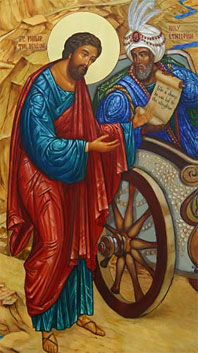
Roman Catholics like to remind us Protestants that the Reformation’s sola scriptura has caused unmitigated doctrinal division. Interpretation must be done in community by people who know what they are talking about.
In his talk this week (see previous post Heliocentric Preaching), Doug Wilson humourously described the “just me and my Bible” people who fail to realise that the Bible itself calls us to theology in community. We all need teachers, and the Bible is written the way it is so we are forced into some sort of discipleship. Left alone with our Bibles, we are all Ethiopian eunuchs.
So regarding sola scriptura and interpretive authority, I kind of agree with the Catholics! It has always been something done by the church community.[1]
H O W E V E R . . .
Continue reading
1 comment | tags: AD70, Atonement, Church History, Compromise, Doug Wilson, Ecclesiology, Reformation, Reformers, Roman Catholicism, Tim Nichols | posted in Against Hyperpreterism, Christian Life, The Last Days
Sep
21
2009
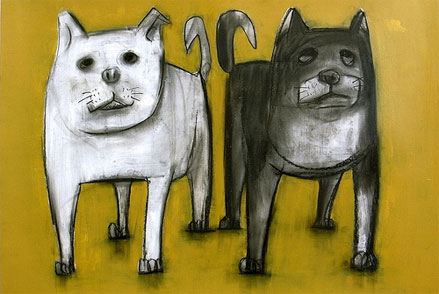
or Feeding the Correct Dog
THIS POST HAS BEEN REMIXED AND INCLUDED IN GOD’S KITCHEN: THEOLOGY YOU CAN EAT AND DRINK
You must be logged in to see the rest of this post.
Join now for a year for $15!
An added thought based on this from a post last week:
Living things have brains, guts and outsides. This is Word, Sacrament and Government. Word is intangible, but our emotions are communicated symbolically through our bodies. Facial expressions and body language are the response of the “Holy Place” to the “Most Holy” of our inner soul. Eyes are organs of judgment. Eyes are also the windows to the soul. The crystal sea is a window to heaven. The “outer court” interacts with the world and needs cleaning. Only clean stuff is allowed inside the “Holy Place.”
So, basically, as a Tabernacle, if my mind is a symbol of the command from the Most Holy (Word), and my body carries out my thoughts and intents in the world (Government), what is in between? The Holy Place, the place of flesh offered to God.
Continue reading
2 comments | tags: Atonement, Corinthians, Fasting, Paul, Sacraments, Tabernacle | posted in Christian Life
Sep
8
2009
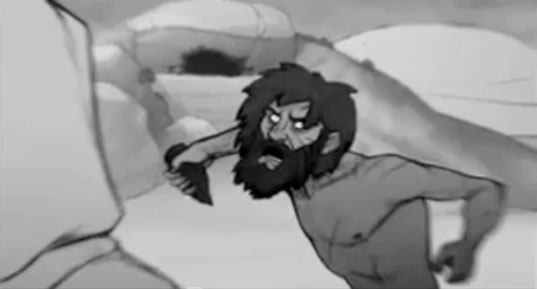
Matthew 1-10 follows the Dominion pattern. After Jesus’ testing in the wilderness, in 4:18-8:13 Jesus called His disciples and began mustering a new holy army – the “next generation”.[1] It was reported to Him that the last Old Covenant Nazirite (holy warrior) was dead. It was time for new warriors. Jesus healed the uncleanness of many, creating a new priesthood. His success in the wilderness as a new Head made possible this new body. Peter Leithart writes:
Continue reading
Comments Off | tags: Atonement, Bible Matrix, Demons, Dominion, High Priest, John the Baptist, Leviticus, Nazirite, Peter Leithart, Totus Christus | posted in Biblical Theology, Totus Christus
Aug
24
2009
or Eclipsing the Temple of Doom
“Because narrow is the gate and difficult is the way which leads to life, and there are few who find it.” Matthew 7:14
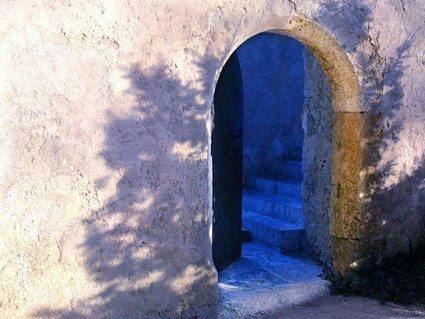
Oh dear. This verse proves postmillennialism wrong. It also proves the rest of the Bible wrong because that is postmillennial too. Fortunately, this problem seems almost as simple to deal with as Irenaeus’ ambiguous text that non-preterists use to “unfound” preterism.[1]
Continue reading
1 comment | tags: Atonement, Bible Matrix, David Chilton, Feasts, Irenaeus, Kenneth Gentry, Postmillennialism, Preterism, Revelation, Sermon on the Mount | posted in Biblical Theology, Totus Christus
Aug
17
2009
or Lord of the Flies
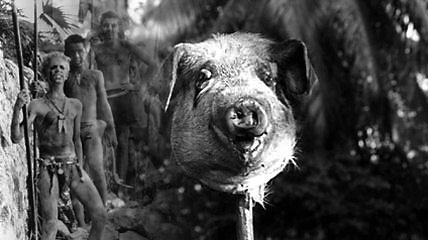
Isaiah 66 pictures hypocritical worship as the Altar of the Abyss (See that series here).
This is just a quick overview. Most of it does seem to fit, but I’m sure there’s plenty more work to do here…
Continue reading
Comments Off | tags: Atonement, Feasts, Isaiah, Numbers 5, Tabernacle | posted in Biblical Theology
Aug
14
2009
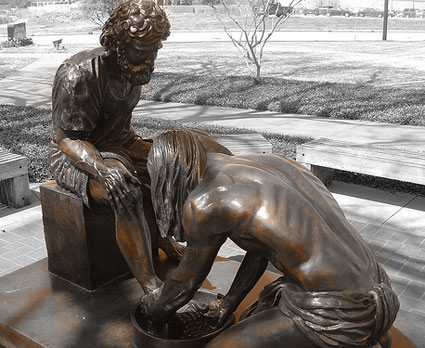
or Filling Up That Which is Lacking
After reading about the Bible’s use of robes as symbols of office (see The Dominion Trap by James B. Jordan), Tim Mitchell commented:
In Bible study we’ve been looking at John, so a few weeks ago was John 13. My Bible translated v.4-5 as “So he got up from the table, took off his robe, wrapped a towel around his waist, and poured water into a basin. Then he began to wash the disciples’ feel, drying them with the towel he had around him.”
So that recalled for me the couple of pages on robe imagery, and it seems to foreshadow what Jesus will do later on very well: He is willing to take off his authority and righteousness, and take on the dirt of our sin.
But then I got a bit unsure, since Jesus then goes on to say “you ought to wash each others’ feet” in v.14 and “Do as I have done to you” in v.15. So if the symbolism applies, how are we also supposed to take other peoples’ sin on us as Jesus did?
Firstly, what a great question. Many New Testament passages become so familiar that we often lose the ability to really think about their ramifications.
The structure of the Last Supper puts this action of Jesus at Atonement, the Laver (Day 6). Jesus is liturgically pre-enacting His role as High Priest. The Adam removed his glorious robes and wore linen for the Day of Covering. Jesus left this in the tomb with our sin on it. But that is not all the High Priest did. He approached the Most Holy twice.
Continue reading
Comments Off | tags: AD70, Against Hyperpreterism, Ahasuerus, Atonement, Daniel, Esther, Hebrews, High Priest, Holy Place, Joseph, Last Supper, Liturgy, Totus Christus | posted in Biblical Theology, Christian Life, Totus Christus
Jul
26
2009
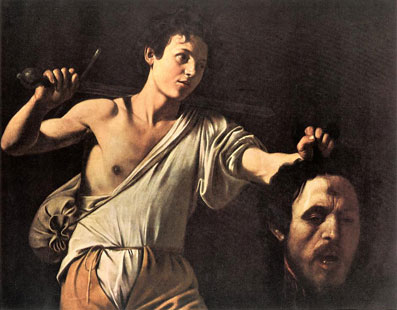
“In the sweat of your face you shall eat bread till you return to the ground…” (Genesis 3:19)
The book of Judges continually uses the imagery of the crushing of the heads of the Lord’s enemies, whether this is literal skulls or heads of state. The Bible makes a big deal of heads and bodies, whether this is the sacrifices picturing the totus Christus, or His rival, Gog and Magog.
Continue reading
Comments Off | tags: Atonement, David, Gethsemane, goliath, High Priest, Moses, Typology, Uzziah | posted in Biblical Theology
Jul
22
2009
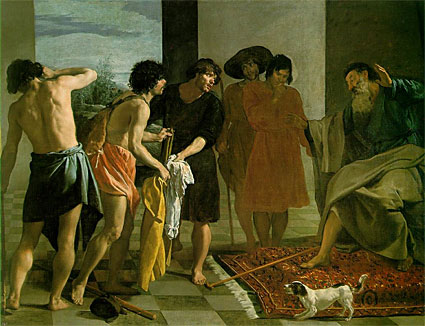
The first ‘cycle’ in the Joseph narrative wasn’t covered in Totus Christus. I have included it in Bible Matrix, and it contains some wonders.
Firstly, Joseph’s first dream (the bowing sheaves) is placed at Firstfruits – Day 3. His second dream (sun moon and stars) is at Pentecost – Day 4.
Secondly, Joseph receives his robe from Jacob at Passover (covering). It symbolises the firmament (Day 2). And his brothers cover it with goat’s blood at Atonement (covering). It symbolises the substitutionary animals and mediatory Man (Day 6). The giving and taking of the robe match chiastically.
Of course, these Scriptures predate the feasts in Leviticus 23.
Comments Off | tags: Atonement, Bible Matrix, Chiasm, Feasts, Firstfruits, Jacob, Joseph, Systematic typology, Veil | posted in Biblical Theology



































